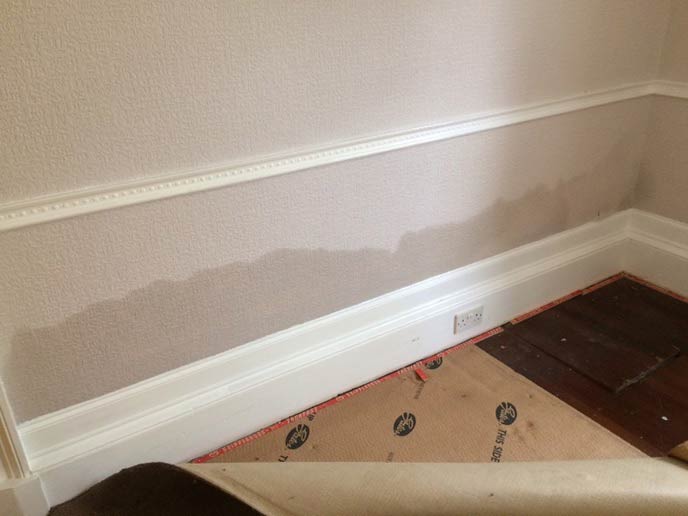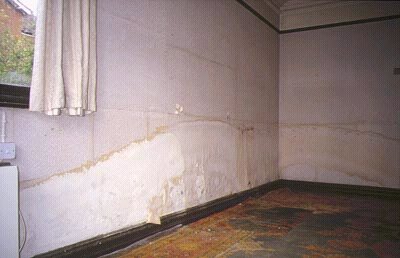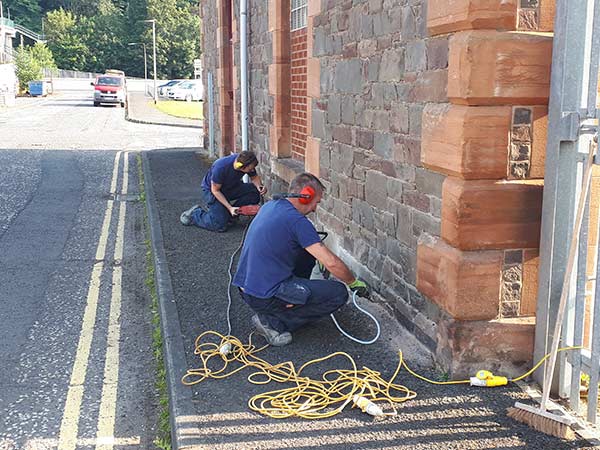What is a Damp Proof Course?

A damp proof course is one of the most important elements of a property. The DPC protects the property against moisture rising from the ground. This page will provide a deeper understanding of what is a damp proof course and what the best types of damp proof treatments are. Excess moisture gaining access to your property can result in a range of different damp issues causing damage to the fabric. It is therefore vital that you ensure that your property has an effective damp proof course in place to repel water from the ground.
What is Damp Proof Course (DPC)?
It is immensely important for all property owners to ensure that their property is protected with an effective damp proof course.
The damp proof course prevents damp from the ground rising up the walls and damaging your property. Properties which have no appropriate damp protection layer or has a damaged damp course may be affected by excess moisture rising from the ground. This excess moisture can affect plaster, decoration and can even result in wet rot, or dry rot affecting unprotected timbers.
Most properties which exist today should have a damp-proof course which is evident at a minimum of 150 mm above ground level. This may appear as a mortar course with a bitumen or plastic DPC sheet poking through. These materials tend to be very effective, unless the building movement result in them cracking or the DPC is bridged or the older bitumen material breaks down due to old age. Damp-proof courses are required in all new build properties in order to prevent rising damp from occurring.
As noted above there are many factors which can result in a damp-proof course failing. One problem which our specialists commonly encounter is that building renovations have raised the ground level above the existing damp proof course. This allows the moisture from the ground to bypass the DPC and let moisture penetrate the property. If this occurs, we would recommend that the ground be reduced to 150mm below the original DPC or if this cannot be done then a new damp proof course will need to be installed. The first step would be to get a specialist damp surveyor to inspect your property and give the correct diagnosis of the damp problem and how it could be fixed.

Different Types of Damp Proof Courses
There are various types of remedial damp-proof courses which can be installed into your property. The appropriate damp proof course will be chosen to suit the construction of the property.
- Damp Proof Course Injection – This system involves a cream or liquid being injected into the wall in order to act as a water repelling layer to stop the damp from the ground rising above the damp proof course. This is commonly known as a chemical damp proof course injection. The system is injected in holes that are drilled into the wall at least 150mm above the external ground level.
- Mortar Injection Damp Proof Course – This is similar to the use of creams or liquid injected into the wall. Instead of cream or liquid being used a chemical enhanced mortar is used and caulked into the holes drilled in the wall. This is used where the construction of the wall may be of random rubble and are prone to having voids within the structure. The mortar fills the hole in the masonry and the chemical is drawn from the mortar into the wall structure to block the rising damp.
- Electro Osmotic Damp Proof Course – When the use of chemicals is not appropriate or the client requests that a non-chemical damp proof course be installed then an Electro Osmosis Damp Proof Course can be fitted. Copper and titanium wiring are used to install a small electric charge into the wall which reverses the polarity of the capillarity in the wall and pulls the rising damp below the level of the new damp course.
Do All Properties Have a Damp-Proof Course?
A damp-proof course is a standard element which is required when building a property. Damp-Proof Coursing was made compulsory in 1875, however many DPC’s installed in the immediate period after this were laid shoddily and no longer fulfil their purpose. Initially DPCs consisted of slate or lead barriers, fitted into the walls to protect against rising damp. More modern properties used bitumen felt and todays properties use a plastic DPC. A DPC may fail because it was not fitted properly or may fail due to deterioration, localised damage or bridging. If the DPC fails then your property may be suffering from rising damp. Rising damp is moisture which defies gravity and moves upwards through walls as a result of capillary action. Tide marks being present on your walls or deterioration of your plaster or decoration are the most visible indication your property is suffering from rising damp.

What Causes Damp Walls?
The most important step with regards to fixing your properties damp walls is identifying the cause of your damp problem. In order to do this, you need to ensure you have carried out the appropriate inspection of your property both internally and externally. However, to the untrained eye it can be very difficult to accurately identify the source of your damp issue. For this reason, we would always recommend the use of a damp proofing specialist who will save you time and money by providing you with an accurate diagnosis of the source of the problem and the appropriated action required to resolve the damp issue.Damp problems on walls can be caused by a number of different issues:
- Defective roof coverings or rainwater gutters or down pipes
- Defective external render or masonry
- Condensation Issues
- Defective Cavity Wall Insulation
- Inadequate window and door pointing
- Defective Damp proof course
- Plumbing leaks
- Defective drains
- External flooding
It is crucial that a specialist accurately identifies the source of your damp problem. As misdiagnosis will give the wrong remedial repair work which will not solve the damp problem and will cost you more as the work will need to be done twice.
How Do I Know If I Have Damp Walls?
If you suspect that your wall is affected by damp then you should inspect the outside and inside off your property looking for defects that could cause damp to affect your wall. You could then use a moisture meter which will tell you if the wall has a higher moisture content than it normally should be. However, if you suspect damp is affecting your property and you feel unsure of diagnosing the problem it is best to get advice as the longer you leave the damp area the more damage it can cause to the fabric of your property.
What To Do Next?
If you are worried that your property is suffering from damp or have spotted signs of damp then it is crucial that you have your property damp surveyed by a professional. To the untrained eye it can be very difficult to accurately diagnose the source of your property’s damp problem.
Richardson & Starling’s damp specialists will be able to accurately diagnose the source of the problem and provide the best solution to eliminate the damp. Ensuring that your property has an efficient damp-proof course in place is crucial to ensure your home is protected from excess moisture. Damp proof course repair work carried out by Richardson & Starling’s specialists comes with a thirty-year guarantee (supported by the GPI scheme) for your peace of mind.
Misdiagnosing the source of the damp issue can prove to be financially costly as well as wasting a lot of time. Utilising Richardson & Starling’s respected and experienced surveyors can prove critical with regards to resolving your property damp problem as efficiently as possible.
Not sure what is causing damp in your home? Contact your local branch for advice or a property survey to regain your peace of mind.
